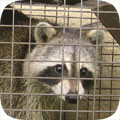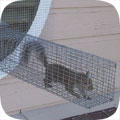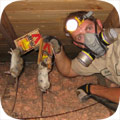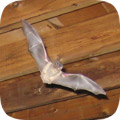- seattle@wildlifeanimalcontrol.com
Call 24/7 for a free quote:
206-806-6733
Seattle Wildlife Animal Control
Professional Wildlife Removal Company Servicing Seattle, WA
If you have a problem with wildlife in your Seattle home, your best option is to hire a company that specializes in Washington wildlife removal only. This is a specialty business, and regular pest control companies do not use the proper techniques to solve animal problems. I have spent many years reviewing Washington and Seattle, and I recommend the following:
Wildlife Trapper Pro
Cell Phone: 206-806-6733
NOTE: If you have a dog or cat problem, call King County Animal Services: 206-296-7387

Wildlife Trapper Pro specializes primarily in removing animals from attics of homes and buildings - this includes squirrels in attics, raccoons, and rats or mice in homes. Washington also has a documented problem with
bats in buildings, and Wildlife Trapper Pro is specially trained in bat removal. They also perform general wildlife trapping services, such as the capture and removal of skunks or opossums on the
property. Call 206-806-6733 to discuss your critter problem and schedule a same-day or next-day appointment. Click here to learn more about
what prices we charge in 2025.
When hiring a company to solve your wild animal problem, you want these features:
- Specializes in wildlife removal, not pest control
- Fully Washington and King County licensed and insured
- Works 7 days per week (critters don't take weekends off)
- Performs full building inspections: enters and inspects attic
- Performs exclusion repairs, with guarantee against animal re-entry
- Offers cleanup of biohazardous wildlife waste
Wildlife Trapper Pro is a full-service Seattle wildlife removal company. This is very different from a regular Seattle pest control company. The pest control companies spray poison to kill insects. This is not at all
similar to wildlife removal. Wildlife Trapper Pro performs a full inspection of the home or property, and determines why the animal(s) are there, and if inside a building, how the animals got inside. All
animals (including rodents) are trapped and removed, or if possible, removed from the building using special exclusion devices. Once the animals are gone, preventative repairs are essential, and
cleanup is sometimes recommended.
 Seattle wildlife trapping - it's not as simple as it may seem. It's illegal in Washington to trap without a license. Trap type is very important and there are many different types, bait is somewhat relevant, trap placement
is vital, and there are dozens of small things that are very important to know.
Safety is a concern. Then once the animal is trapped, it must be removed and dealt with in the proper manner according to Washington law. We offer Seattle raccoon removal. Read more about how to get rid of raccoons.
Seattle wildlife trapping - it's not as simple as it may seem. It's illegal in Washington to trap without a license. Trap type is very important and there are many different types, bait is somewhat relevant, trap placement
is vital, and there are dozens of small things that are very important to know.
Safety is a concern. Then once the animal is trapped, it must be removed and dealt with in the proper manner according to Washington law. We offer Seattle raccoon removal. Read more about how to get rid of raccoons.
 Animals in attics - this is our specialty at Wildlife Trapper Pro. Many types of animals like to live in attics. This includes squirrels, raccoons, rats, mice, bats, birds, and even possums. Critters like to go into attics for a safe place to live
and raise their young. Removing animals from attics is very complex work, partly because of the presence of baby animals. If you need Seattle squirrel removal, we can remove all the squirrels from your attic, and seal out any future ones. Read more about how to get rid of squirrels.
Animals in attics - this is our specialty at Wildlife Trapper Pro. Many types of animals like to live in attics. This includes squirrels, raccoons, rats, mice, bats, birds, and even possums. Critters like to go into attics for a safe place to live
and raise their young. Removing animals from attics is very complex work, partly because of the presence of baby animals. If you need Seattle squirrel removal, we can remove all the squirrels from your attic, and seal out any future ones. Read more about how to get rid of squirrels.
 Rodent control must be done in a very specific way. First off, the most important thing is that all the openings that rats and mice can use to enter a house be sealed. Then all the rodents must be physically trapped and removed.
Never, ever use poison! Most Seattle exterminators will just use this lazy poison technique to kill rodents, and it causes more harm than good - dead stinky rats, and it doesn't solve the problem. Call us for correct Seattle rat removal. Read more about how to get rid of rats.
Rodent control must be done in a very specific way. First off, the most important thing is that all the openings that rats and mice can use to enter a house be sealed. Then all the rodents must be physically trapped and removed.
Never, ever use poison! Most Seattle exterminators will just use this lazy poison technique to kill rodents, and it causes more harm than good - dead stinky rats, and it doesn't solve the problem. Call us for correct Seattle rat removal. Read more about how to get rid of rats.
 Bat removal is a highly specialized task. Washington is known to have colonizing bats who often live in buildings. Bats love attics. If not removed, the colony can grow to a very large size over the years. The bat droppings are often corrosive and
cause health risks. The same goes for bird droppings on or in buildings. We perform Seattle pigeon removal and bird control. But our specialty is Seattle bat removal. We remove 100% of the bat colony and seal the building so that it's totally bat-proof. Read more about how to get rid of bats.
Bat removal is a highly specialized task. Washington is known to have colonizing bats who often live in buildings. Bats love attics. If not removed, the colony can grow to a very large size over the years. The bat droppings are often corrosive and
cause health risks. The same goes for bird droppings on or in buildings. We perform Seattle pigeon removal and bird control. But our specialty is Seattle bat removal. We remove 100% of the bat colony and seal the building so that it's totally bat-proof. Read more about how to get rid of bats.
 If you have animals inside a house, no job is complete without proper exclusion repairs. If you simply hire a Seattle trapper who only removes the critters, then the problem will return. You need to hire a Seattle wildlife control company that identifies 100% of the animal entry points
into your building, and seals them shut with professional repairs. In addition, in many cases animals have left waste or contamination behind, and you'll want a company that can provide professional cleaning services. Wildlife Trapper Pro does both.
If you have animals inside a house, no job is complete without proper exclusion repairs. If you simply hire a Seattle trapper who only removes the critters, then the problem will return. You need to hire a Seattle wildlife control company that identifies 100% of the animal entry points
into your building, and seals them shut with professional repairs. In addition, in many cases animals have left waste or contamination behind, and you'll want a company that can provide professional cleaning services. Wildlife Trapper Pro does both.
The above are just some of the services offered by Wildlife Trapper Pro. We also trap and remove animals that destroy lawns, such as moles, or digging animals. Sometimes animals like opossums will live under buildings, steal pet food, raid garbage cans, etc.
Read about how to get rid of opossums. Skunks commonly live under sheds or decks, and set up a den. We can trap and remove them without them spraying. Read about how to get rid of skunks. Wildlife Trapper Pro
also provides dead animal removal in Seattle. If you need help with any other wildlife conflict, from a fox, beaver, groundhog, or any other critter, we can solve it. We also do Seattle snake removal - most of the snakes in Washington are not venomous, but
call us if you want safe removal, or read about how to get rid of snakes in Seattle. And remember, we are a private business, not King County Animal Control Services, so if you have a dog or cat problem, call the County at 206-296-7387.
King County animal services does not handle any wildlife issues.
Wildlife Trapper Pro
Cell Phone: 206-806-6733
Seattle Pricing Info
Every wildlife removal situation is different, from the species of animals involved, the location of the animal inside a house or outside, the extent of repairs or cleanup, etc. It's impossible to give one-size-fits-all prices. Examples MIGHT include:Small Job: For example, a one-stop job to remove an animal in the yard: $100 on up
Medium Job: For example, getting critters out of your house with minor repairs: $300 on up
Large Job: For example, a project involving many service trips and complex work: $500 on up
Give us a phone call now and tell us about your wildlife issue and we will be able to give you a price estimate over the phone. If you're cool with it, we can schedule a same-day or next-day appointment if you like. Our prices are fair, and a good value because we do the job right, the first time.
Seattle Wildlife Tip #1:
What should I do if there is a raccoon in my attic - A raccoon in the attic might seem like the end of the world, but it could be worse; you could have a rat infestation. People will argue the merits of one over the other, but a raccoon isn't going to be sneaking through all the areas of your home in the way a rat would. Regardless, you need to have the animal trapped and removed before you can think about fortifying your house. One of the biggest mistakes homeowners make is sealing up the raccoon hole when they see the animal leave the building. The problem with this is that most raccoons inside of a home are mothers. Somewhere inside there is a litter of kits that will be crying to be fed in a few hours. Not only will the mother return to your attic, if she can't get in, she'll try to create a new opening. If she's unsuccessful and you never remove the babies, you'll eventually be hunting through your walls looking to remove stinking corpses. The smell of a dead animal can take months to dissipate, and you can only imagine what multiple decaying bodies would be like. The best way to handle the situation is to have a professional come and trap the mother raccoon as well as find and safely remove her young. This way mother and children can be relocated to a safe place together.
Seattle Wildlife Tip #2:
Trapped Wild animal - Once you have caught an wild animal in a cage trap, it is always worth being quite cautious when you are getting close to the trap, as the wild animal is likely to be quite afraid, and will often act unpredictably. It is best to try and keep the animal as calm as possible, and many people will throw a blanket over the trap before moving it, which will often help to calm the wild animal down. You may also want to wear old clothes when moving the wild animal, as these animals will often release a smelly musk when they are frightened or nervous. If you are planning on transporting the wild animal it is best to use a truck where possible because of the potential smell from the musk, but if you are using a car you may want to consider lining the vehicle with old blankets. When it comes to releasing the wild animal that has been trapped, then it is usually best to take it at least five miles from your property, and to release it well away from other homes too. It is worth taking the trap into a woodland area before opening it so that the wild animal doesn't immediately flee on to the road.
Washington Wildlife Information:
Washington State bird: Willow goldfinch
State mammal: Olympic marmot, orca
State amphibian: Pacific tree frog
State fish: Steelhead trout
State insect: Green darner dragonfly
Washington State is one of the lesser-publicized states in the country, largely because it is out of the path of many natural disasters like tornados, hurricanes, and powerful 'Nor-Easter' storms. The state has a stunning sea on its upper western corner. This sea is named the Salish Sea, and it is an inlet of the Pacific Ocean filled with hundreds of islands and deep bays. There are over 100 animal species that rely on the sea for food and shelter. Beyond the sea, heading inland, the state is divided north to south by the Cascade Mountains. This is only one of several large mountain ranges in Washington. On the western side of the divide, the weather is typically mild with cooler, wet winters. The eastern side of the divide is very opposite. There are dry areas that are considered deserts, and a large semi-arid region on the west side is used primarily for agriculture.
The mountains in Washington are home to many large and small animals. The largest of these is the moose, which is rivaled only by grizzly bear in weight. Grizzlies are uncommon in the state, spotted only in the deepest parts of the Cascades. Their more common cousin, the black bear, is found in most of the region, and can be troublesome for people trying to keep birdfeeders up. The next creatures down the size chain are elk, cougars, and coyotes. Elk are herd animals, and they typically remain at the tops of mountains until winter snows drive them in to the valleys.
It is not the large animals that are problems in the state of Washington. This state did not escape the attention of pest critters like raccoons, skunks, woodchucks, pocket gophers, bats and opossums. Anyone living close to the forested areas of the state will see these opportunistic animals, and they will undoubtedly see a fair share of squirrels, rats, and mice, too.
The Salish Sea hosts just as many critters as do the mountains. In the sea, otters, whales, sea lions, seals, and blue heron are frequent visitors. Homeowners looking to live along the coast will eventually be exposed to the many land animals, like black bear, that come to enjoy the wealth of wildlife at the water's edge.
You can always call Wildlife Trapper Pro, any time of day, at 206-806-6733, for a price quote for Seattle wildlife control services. I am confident that this is the best choice amongst wildlife removal companies in Seattle, WA.







































